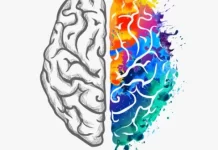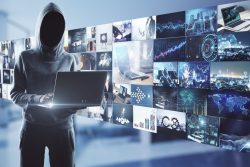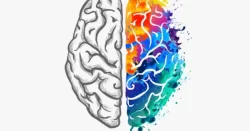…navigating workplace stress in the digital age
Both leaders and employees are perpetually tasked with being creative and innovative in their professional environments. Presently, the swift progress of technology has triggered a rapid pace of transformation across numerous industries. This pressure has given rise to an insatiable demand for novel ideas, although the intensity varies across different sectors. As we find ourselves in the middle of the month, the accumulated stress and workload often peak, adding to the challenges. While this accelerated development carries numerous advantages, a prominent drawback has been the recurring experience of burnout and mental exhaustion in the workforce, particularly noticeable around mid-month.
Daniel Levitin, a cognitive psychologist, neuroscientist, and author in his book “The Organized Mind: Thinking Straight in the Age of Information Overload,” explores how the influx of information in our current era can lead to feelings of being overwhelmed, disoriented, and disconnected. His work offers insights into how individuals cope with this information saturation, including strategies like eliminating external distractions, focusing on personal needs, and managing the cognitive load effectively.
In today’s digital age, there has been a marked increase in reliance on technology, leading to a significant shift in social interactions and connections. Jennifer Riggings, a contributor to NewStack, notes that there has been a shortfall in providing adequate managerial training to support employees in this technology-driven environment. This shortfall has resulted in many managers reverting to traditional, top-down management styles and conducting more meetings than necessary. Not just managers, but employees navigating this digital landscape for the first time also needed proper training, which often was not sufficiently provided.
Riggings further highlights an emerging issue: the inability to disconnect from work. With the elimination of commuting and the blurring of work-life boundaries, employees are spending more time working, averaging an extra four hours per week. This phenomenon has led to an increase in meetings and communication, with an 8% rise in emails sent outside typical business hours.
Research from the University of Zaragoza in Spain provides a relevant and modern perspective on this issue. The study, titled “Technostress and Burnout Among Teachers in the Digital Era: The Role of Social Support,” explores the link between the overuse of technology and mental burnout.
The study highlights the benefits of online connectivity, such as improved team communication and efficiency. However, it also points out the negative impacts of being constantly connected, which can lead to a disordered work perspective. Employees, the study reveals, often feel compelled to be always available, which means they may find it hard to ignore incoming communications, especially those from superiors. As a result, work often extends beyond office hours into personal time, leading to an unhealthy work-life balance that can contribute to burnout.
Dr. Raquel Gómez-González, the lead author of the study, emphasizes that the ‘always-on’ mentality and its subsequent impact on personal life and mental health cannot be ignored in today’s digital work environment. This lifestyle can take a significant toll on employees’ wellbeing, leading to higher levels of stress and burnout.
In 2019, the World Health Organization recognized workplace burnout as a genuine “occupational phenomenon”. WHO defined it as a syndrome arising from “chronic workplace stress that has not been successfully managed.” However, it’s difficult to manage stress if you’re swimming in work during your so-called downtime. When you’re constantly on (even outside of the office) that means there is no off switch. It feels like you have no opportunity to pause and take a deep breath without worrying about the next task. That can lead to bigger health issues and, more likely, burnout.
A recent report from Indeed found that employee burnout is on the rise: 52% of all workers are feeling burned out, up +9% from a pre-COVID survey. Employees of all ages and types are experiencing the impact of stress, fatigue, and mental health challenges.The impact keeps increasing and the following statistics create a fuller picture of how dire the situation is:
- 75% of workers have experienced burnout, with 40% saying they’ve experienced burnout specifically during the pandemic. (FlexJobs)
- 67% of all workers believe burnout has worsened over the course of the pandemic. (Indeed)
- Burned-out employees are 63% more likely to take a sick day and 2.6 times as likely to be actively seeking a different job. (Gallup)
- 37% of employed respondents say they are currently working longer hours than usual since the pandemic started. (FlexJobs)


- 61% percent of remote workers and 53% of on-site workers now find it more difficult to “unplug” from work during off-hours. (Indeed)
So far, we have talked extensively about how technology has contributed to increased burnout. However, there are additional factors that contribute to this. MayoClinic lists them as follows:
- Lack of control. An inability to influence decisions that affect your job – such as your schedule, assignments or workload – could lead to job burnout. So could a lack of the resources you need to do your work.
- Unclear job expectations. If you’re unclear about the degree of authority you have or what your supervisor or others expect from you, you’re not likely to feel comfortable at work.
- Dysfunctional workplace dynamics. Perhaps you work with an office bully, or you feel undermined by colleagues or your boss micromanages your work. This can contribute to job stress.
- Extremes of activity. When a job is monotonous or chaotic, you need constant energy to remain focused – which can lead to fatigue and job burnout.
- Lack of social support. If you feel isolated at work and in your personal life, you might feel more stressed.
- Work-life imbalance. If your work takes up so much of your time and effort that you don’t have the energy to spend time with your family and friends, you might burn out quickly.
Here are some signs to look out for that may indicate burnout:
- Exhaustion: This can be both physical and emotional. Physically, you might be constantly tired, drained, or lack the energy to be productive. Emotionally, you may feel depleted, overwhelmed, or unable to cope with stressors.
- Reduced performance: Burnout can lead to a noticeable drop in work performance. This might manifest as difficulty concentrating, reduced creativity, or a decline in problem-solving abilities. Tasks that were once manageable might now seem insurmountable.
- Cynicism and detachment: If you find yourself feeling cynical or negative towards your job, colleagues, or the organization, this could be a sign of burnout. You might feel emotionally detached from your work or your co-workers, and you may begin to distance yourself physically, taking more sick days or coming in late.
- Physical symptoms: Burnout can also manifest physically. This can include symptoms such as headaches, digestive issues, sleep disturbances, and increased illness due to lowered immune response.
- Increased irritability or loss of patience: If you find that your patience is thinner than it used to be, especially with colleagues or clients, this may be a sign of burnout. You may find that you are more easily irritated or frustrated than usual.
- Neglecting personal needs: Skipping meals, neglecting personal hygiene, or disregarding your own physical health and well-being may also indicate burnout.
We may not be able to slow down the whole world, but we can, with these 4 keys start our journeys of being more mindful and easier going with ourselves so that we can be responsibly creative.
- Be Human
We often forget that we are living breathing beings. Being surrounded by automation has the tendency to cause us to act like the robots with the people we work with. Yet, we owe it to ourselves to slow down and simply be human. Allow yourself to feel tiredness and overwhelm without immediately going into fix or solution mood. It is not only normal but also very important to relax if need be.
- Be Mindful
The act of being mindful can be very concentrated but there are little habits that you can build that will bring you into the present to observe what is happening around you. It can be taking the time to share your thoughts, feelings and ideas with work colleagues, friends or family or simply writing them down in a book. When you become aware of what your mind is thinking, you can successfully declutter and discard unhelpful thoughts while focusing on the meaningful and helpful ones. If we make no time to think about the things we think about, or to talk to ourselves, then we get lost in the endless cycle of just doing or acting without true meaning.
- Be Playful
‘All work and no play make Jack a dull boy’ is certainly true! As working adults, we think that there is no reason and space to play. Playing should not be an activity reserved only for children. Everyone can play. Everyone should make some time to play. This simply means that you should take a break! When you pay attention to your mind and your body, you can decipher when it is time to break and refresh. Learn to play without technology. There is so much beauty in the nature around us that it is helpful to reconnect with ourselves and the things we love by doing the simple things such as taking a walk in the park or exercising on the beach.
- Be Restful
Due to technology, information circulates all around us endlessly. It allows an immeasurable amount of noise and news that overwhelms us almost all of the time. But we need to be disciplined enough to disconnect ourselves from all that noise and rest. By nature, we have been wired to recharge and reset our minds and body through rest. We must therefore be conscious of ourselves in fulfilling our duties not to go beyond our limits and try to fix everything or do every task before us even when we realize tiredness has set in. There is always a notable difference in productivity when it comes to a mind which has had enough rest in comparison to one which is overworked.
In our quest to achieve maximum productivity in our professional lives, it’s essential to carve out moments of respite from all potential disruptions. This allows our minds to rejuvenate, fostering enhanced performance rather than pushing us towards burnout.
Empower yourself today by accessing any of my masterclasses on speaking!
Visit our website at www.dzigbordigroup.com











